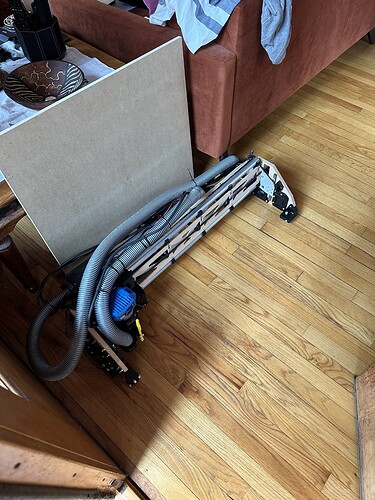Hey all,
I built a MPCNC Primo about 4 months ago. So far I have really enjoyed using it
however, there are a few things to be desired still, and wanted some input regarding my thinking here.
My main concern/ use of the cnc is portability, mainly because I do not have a “set” location I can leave the machine permanently. My MPCNC now is mounted to a 36x24in piece of MDF, and I can move it around pretty easily without too much hassle. But with the motors sticking out past the conduit rails on the sides, it become kind of a weird shape to transport/ set down. I have seen some enclosures build before around mpcnc, however that either means the enclosure must be much bigger that the actual mpcnc, or the work area becomes smaller by making the mpcnc smaller. I initially chose to build an mpcnc because most people that suggested the lowrider 3 mentioned it only as an alternative for a larger build area, which I did not need.
Is it reasonable to build a lowrider 3 with an overall dimension (table size, not work size) of around 24-48in? It seems like a much more compact package overall, and I like how the only part around the perimeter of the machine is one rail and the belts. Curious of any other smaller lowrider 3 builds people have done, pictures would be appreciated.
As always thanks to everyone on the forum for being so helpful and kind.
